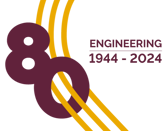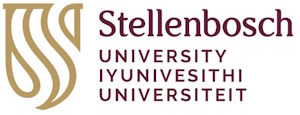
In a first-of-its-kind for Africa, the Department of Electrical and Electronic Engineering in the Faculty of Engineering at Stellenbosch University (SU) recently acquired a world-class machine used for micro-manufacturing capabilities that offer many opportunities for research, development and innovation.
Known as the Durham Magneto Optics MicroWriter ML®3, the machine will be used for various microfluidic projects (i.e. the design and study of devices which move or analyse tiny amounts of liquid) at SU, while also serving as a national fabrication facility for researchers countrywide.
Some of these projects include cutting-edge organ-on-chip medical research, with applications in drug discovery, cancer diagnosis and treatment, and modelling diseases, as well as ultra-sensitive optical biosensors and cell culture models (growing and maintaining cells in a laboratory), and cell filtration and manipulation.
Daniël Retief, a PhD candidate and nano-lab manager at the Department of Electrical and Electronic Engineering, says a micro writer uses very precisely focused light to form patterns in light-sensitive materials, which can then be selectively removed to leave behind only the desired patterns.
“This allows one to manufacture micrometre-scale structures, such as microscopic channels to manipulate individual blood or bacterial cells, for many different applications. The smallest structure that the machine can reliably make is 0.5 micrometres wide, which is about 200 times smaller than the diameter of a human hair.”
According to Retief, one of the main advantages of this machine is that it can make virtually any pattern or design at a very high speed without the need for a photo mask (a pattern of the desired structure, with the shadow of the mask being used to develop the structures) and without the complex supporting infrastructure that usually goes with mask-aligners, the alternative to a micro writer.
“This machine allows fast prototyping and iteration without the need for masks to be made. Making a mask is very expensive as a new mask must be made for every pattern and cannot be changed once made. In contrast, the MicroWriter has an on-board device that acts as a mask, allowing any pattern to be exposed at any time.”
“Our goal is to build local manufacturing capacity and skills so that South Africa is less dependent on others for high-tech manufacturing. With the acquisition of this machine, we now have world-class micro-manufacturing capabilities, which allows us to compete in fields like MEMS (microelectromechanical systems), laser optics, very high-frequency electronics, biosensors, and more.”
Retief adds that “we still need to fully wrap our minds around the capabilities of the MicroWriter, since it is capable of far more than we are used to. It will be some time before we can utilise it to its full extent.”
The micro writer is one of several machines needed to build a world-class biosensors and microfabrication facility at SU and will be installed in a cleanroom once the Electrical and Electronic Department refurbishment has been completed in 2024. Until then, some of the equipment is housed in a temporary laboratory in SU’s Department of Chemistry, while others are in storage.
The MicroWriter ML3 forms part of the Nano-Micro Manufacturing Facility (NMMF) established by the Department of Science and Innovation in 2022 and funded by the South African Research Infrastructure Roadmap. The NMMF’s mission is to foster research in nano- and microscale manufacturing while supporting industry partners in the exploration and development of cutting-edge technologies. The facility comprises five nodes across the country, each specializing in distinct fields. Stellenbosch University’s node, specifically focused on biosensors, is set to benefit immensely from the acquisition of the MicroWriter ML3.
Photo: Prof Willie Perold (left) and Lesanne van der Vyver (right), a postgraduate student at the Department of Electrical and Electronic Engineering. Lesanne received the necessary training to use the laser machine, which is integral to her research in organ-on-chip technology.
- The NMMF is open to anyone who wishes to make use of its equipment. There is a fee involved for using the machine and associated facilities.
[Article by Amber Viviers]
FOR MEDIA ENQUIRIES ONLY
Prof Willie Perold
Department of Electrical and Electronic Engineering
Faculty of Engineering,
Stellenbosch University
Tel: 021 808 4368
Email: wjperold@sun.ac.za



